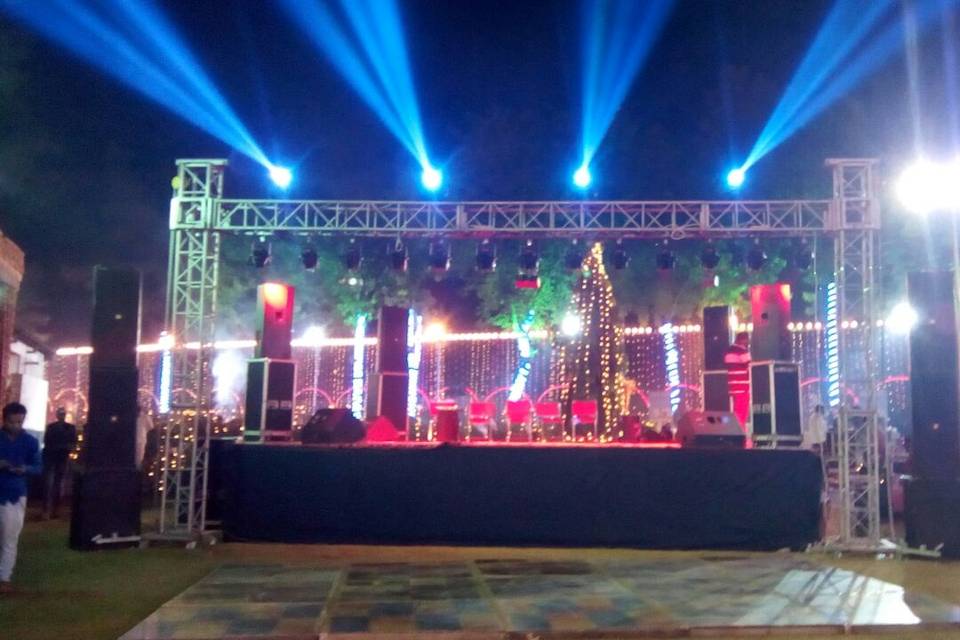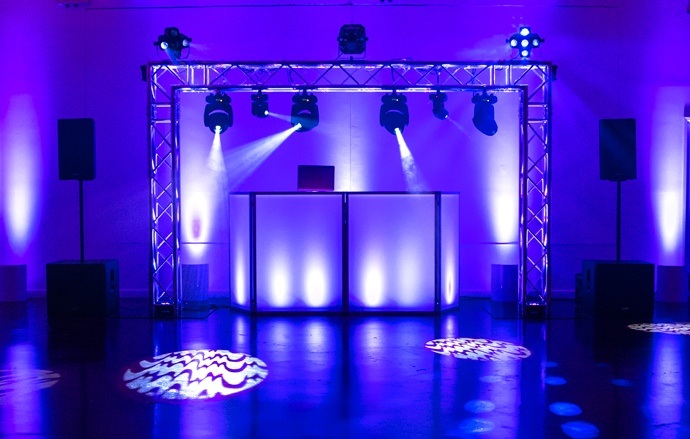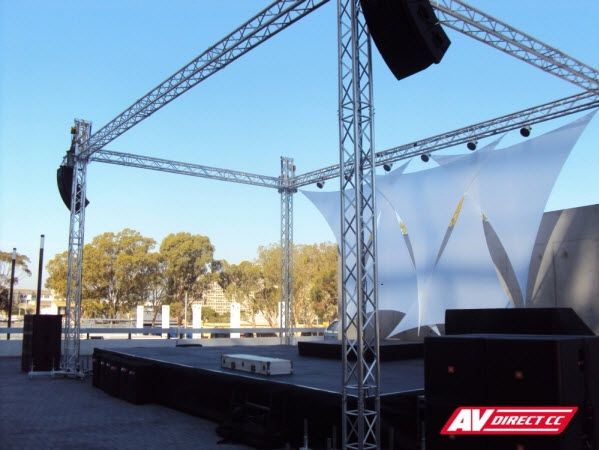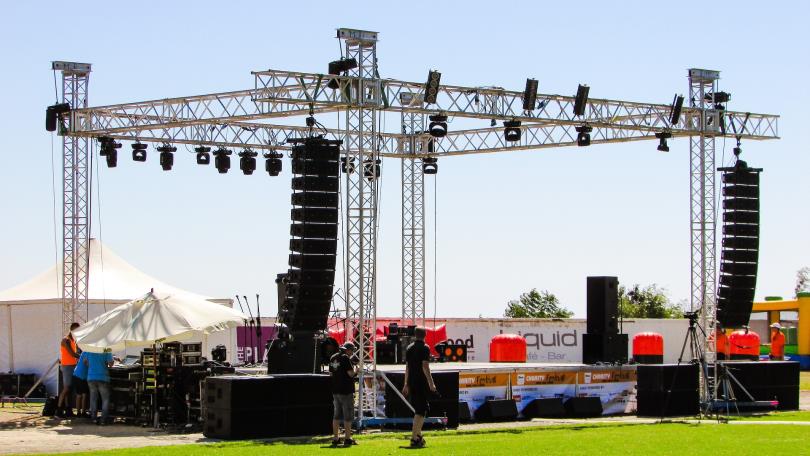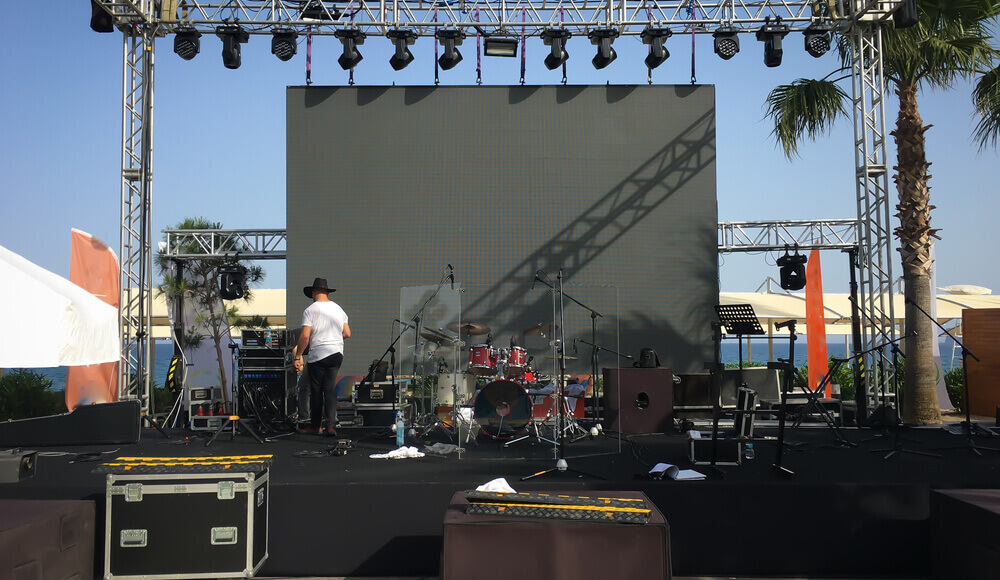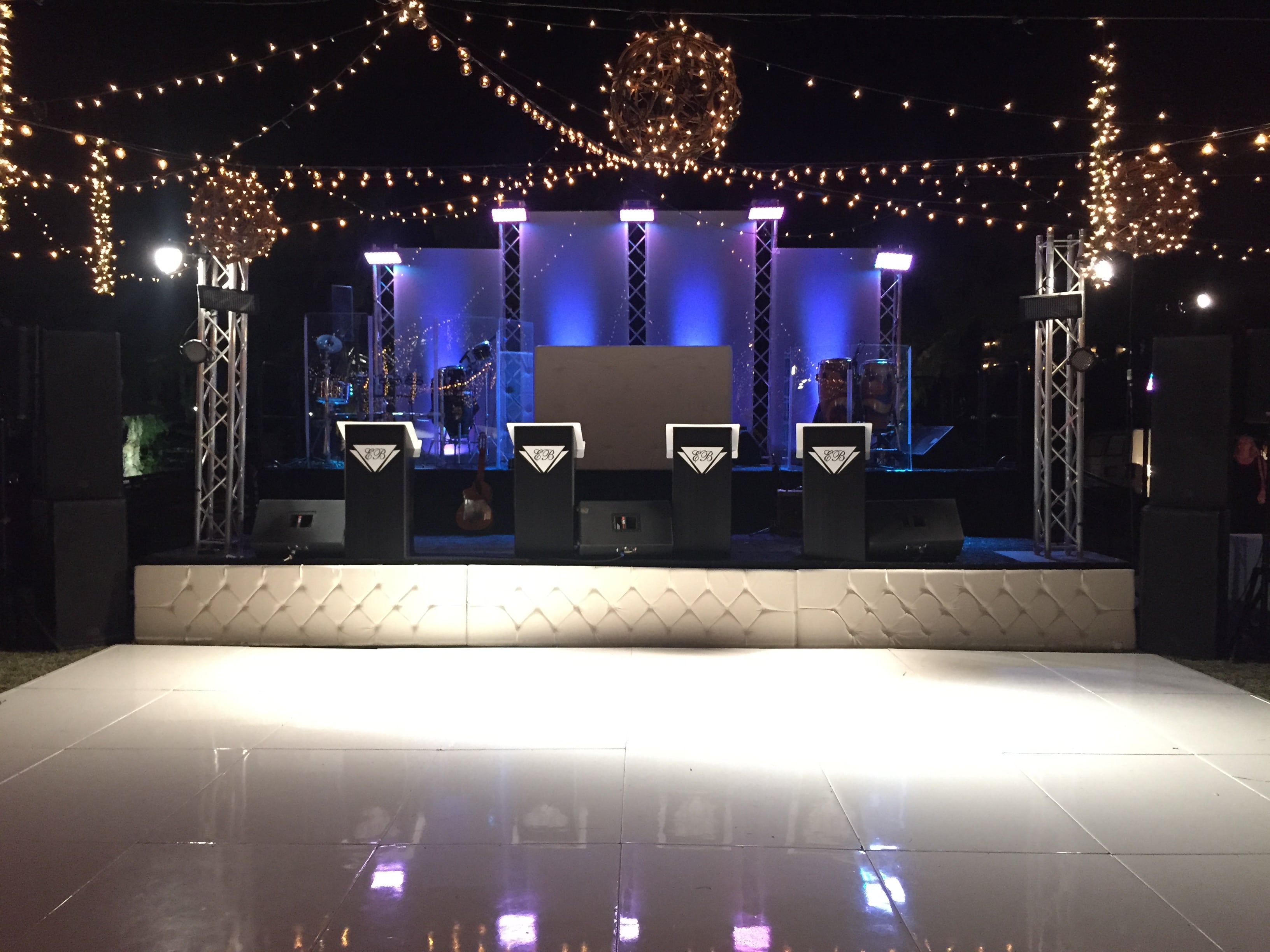- The size and shape of the stage will determine how much space is available for setup. Smaller stages may limit the number of performers or props that can be used, while larger stages offer more flexibility.
- The backdrop or background scenery is essential for creating the right atmosphere and setting the scene. This could be a painted backdrop, a digital projection, or a physical set piece.
- Proper lighting is crucial for visibility and setting the mood. Lighting can be adjusted for different scenes or moments in a performance. It’s essential to have spotlights, floodlights, and possibly moving lights for dynamic effects.
- Ensure that the stage has the necessary audio equipment, such as microphones, speakers, and monitors, to deliver clear sound to the audience and performers.
- Depending on the production, you may need furniture, decorations, or specific props. These should be strategically placed and easily accessible to performers during the show.
- For events with audio, visual, or lighting equipment, organize and secure cables to prevent tripping hazards and to maintain a clean stage appearance.
- Designate an area for performers to change into costumes and store their wardrobe. Quick changes may require a backstage area or designated dressing rooms.
- Use tape, chalk, or other markers to indicate positions on the stage for actors, props, and equipment. This helps ensure consistency in blocking and movements.
- Assign roles to stagehands and technicians who will handle set changes, props, and equipment adjustments during the performance. They should know their responsibilities and timing cues.
- Ensure that the stage is safe for performers and crew. This includes checking for any loose or hazardous elements, having fire extinguishers on hand, and establishing emergency exit plans.
- Consider the needs of all performers, including those with disabilities. Ensure ramps, lifts, or other accommodations are in place if necessary
- Conduct a rehearsal or walkthrough of the stage setup with all relevant parties, including performers, technicians, and stage crew, to ensure everyone is familiar with their roles and the timing of the setup.
- Appoint a stage manager who is responsible for coordinating all aspects of the stage setup and performance. They serve as the central point of communication between all parties involved.
- Create cue sheets that detail when specific actions, lighting changes, sound cues, and set changes should occur during the performance.
- Plan for post-performance cleanup, including the removal of props, set pieces, and equipment to prepare the stage for the next show or event.
